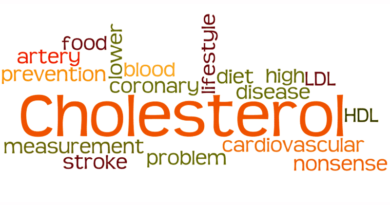Global meat trade & health

Executive summary
* A study recently claimed that 5,000 people die each year because of trade of red and processed meat.
* The study was a modelling exercise and thus whatever is assumed will be found by the model.
* The study assumed that 100g/day consumption of red meat (vs none), facilitated by imports, caused a 16% higher relative risk of colorectal cancer; a 20% higher risk of type 2 diabetes and a 34% higher risk of ischemic heart disease. Similar assumptions were made for 50g/day consumption of processed meat (vs none), facilitated by imports.
* The model took additional meat available through global trade and applied the assumed additional relative risks to come up with claims about deaths and Disability-Adjusted Life Years (DALYs).
* The usual flaws of epidemiology apply. Causation cannot be claimed from association. Relative risks may be tiny in absolute terms. There are so many healthy person confounders applicable here and many of the original studies will not have adjusted for key factors related to colorectal cancer, type 2 diabetes and/or heart disease.
* A number of limitations were reported but nowhere near as many as should have been reported.
* The paper noted that trade in meat can balance the availability of nutrition, but no further recognition was given to the positive health benefits of meat. Only downsides were assumed to count.
* As with other attacks on meat, the notion that an ancient food is responsible for the most modern illnesses (cancer, type 2 diabetes and heart disease) makes no sense.
Introduction
This week’s topic was one of those that filled up my inbox; many people sent it to me for review. It was called “Global red and processed meat trade and non-communicable diseases” and it was written by Chung et al (Ref 1).
I must admit that the paper was annoying from the start. There was an executive summary box on the front page entitled “key questions.” In answer to “What is already known?” the authors replied, “The world has begun to pursue sustainable diets for both human health and environmental sustainability with fewer animal-based foods.” In answer to “What are the new findings?” the authors replied, “The increased intake of red and processed meat products via trade caused the abrupt increase of diet-related NCDs, and the attributable burden of diet-related NCDs had large geographical variations among countries” (my emphasis in bold).
With reference to the first question and answer, the world has not “begun to pursue sustainable diets for both human health and environmental sustainability with fewer animal-based foods…” That’s what anti-meat people want to happen. It’s not what has happened. As a global average, per capita meat consumption has increased approximately 20 kilograms since 1961; the average person consumed around 43 kilograms of meat in 2014 (Ref 2).
With reference to the second question and answer, intake of red and processed meat products cannot be claimed to have caused anything. The claims in the paper are based on nutritional epidemiology, which can only indicate association, not causation. We will see that the association does not withstand scrutiny either.
The modelling exercise
I called this section “The modelling exercise” rather than “The study” because that’s what it was. When doing modelling, assumptions are everything. If the model assumes that an extra (say) 50g of meat per day leads to an extra 20% incidence of heart disease, then a 50g increase in meat fed into the model will produce the result that heart disease incidence increases by 20%. It has been assumed to be so and so it will be.
The paper took a novel approach rather than being just another ‘eat more meat and get more disease’ paper. It focused on global trade of red and processed meat under the assumption that some countries are getting more deaths and disability-adjusted life years (DALYs) because other (bad) countries exported meat to them. Had this not happened, they wouldn’t have had these deaths and lost years.
The paper aimed to address two research questions (1) What is the impact of red and processed meat trade on diet-related Non-Communicable Diseases (NCDs)? and (2) Which countries are particularly vulnerable to diet-related NCDs due to red and processed meat trade?
To answer these questions the researchers gathered data on trade flows in 154 countries from 1993 to 2018. (The countries included India and China, so most of the world’s population was covered). They did this following the founding assumptions that “increasing red and processed meat consumption via trade can contribute to a substantial rise in the burden of diet-related NCDs including colorectal cancer (their ref 18), diabetes mellitus (their ref 19) and coronary heart disease (their ref 20).” Their ref 18 is the World Cancer Research Fund report from 2007. This is way out of date. Their ref 19 is a study from 2013, also old and not even a meta-analysis. Their ref 20 is at least a meta-analysis, but from 2010. This is lazy and poor research.
I did a complete review of the evidence related to ‘meat’ in 2018 (Ref 3). As the US Dietary Guidelines have so much influence world-wide, I reviewed the Nutrition Evidence Library, which was used by the Dietary Guidelines Advisory Committee (DGAC) for the 2015 revision (Ref 4). The first interesting thing to note was that red meat was not documented as a category. Red meat appeared in a category called “animal protein.” The second interesting thing to note was that all data used for “animal protein” for the 2015 Dietary Guidelines for Americans came from 2010 i.e., nothing had been updated since the 2010 guidelines. The evidence that was documented examined the relationship between the intake of animal protein products and seven conditions: 1) cardiovascular disease; 2) blood pressure; 3) Type 2 diabetes; 4) body weight; 5) colorectal cancer; 6) prostate cancer and 7) breast cancer.
My 2018 review addressed red and processed meat (all animal protein in fact) and the three conditions included in Chung et al’s assumptions: colorectal cancer, type 2 diabetes and heart disease. The finding for red meat and colorectal cancer was “There were no findings against red meat.” I found the same when I examined this in April 2018 (Ref 5). The finding for red meat and type 2 diabetes was “Not one study has even evaluated red meat, let alone found any evidence against it.” The finding for red meat and cardiovascular disease (that’s strokes and heart disease) was “Not one study has even evaluated red meat, let alone found any evidence against it.” For further recent attempts to claim a connection between meat and colorectal cancer, please see these rebuttals (Ref 6).
We could discard the paper at this point because their founding assumptions about meat intake and health are flawed and that’s for association, let alone causation. However, for completeness, let’s continue to see what the researchers did.
The methodology
Chung et al started with data for trade in red and processed meat and how this had increased over time. That was real data.
They selected 14 red meat items and 6 processed meat items, to examine in 154 countries, over the period 1993 to 2018. Red and processed meat availability was converted into per capita consumption in grams per day. Only adults over the age of 25 were considered. Those were (reasonable) research choices. Less reasonable was the assumption that the entire population was “exposed to the dietary risks.” Some people eat no meat; most people eat different amounts of meat. However, this enabled the researchers to apply the same relative risk factors to everyone, as it would not be possible to work out where meat imports end up in a country.
The authors used the (supplementary material from the) Global Burden of Diseases project, which reported relative risks by five-year age intervals (25-29, 30-34 etc.) per standard serving size of red meat and processed meat (Ref 7). The relevant data used were included in the Chung et al Supplementary Table S2. (I double checked the figures in the Chung et al supplementary table against the supplementary material from the Global Burden of Diseases project). Interestingly all the age groups claimed to have the identical risk (and confidence intervals) for each of the higher meat intakes reported (50g/day, 100g/day, 150g/day and 200g/day). Hence, this wasn’t really done in five-year age intervals as all five-year age intervals had the same relative risk estimates applied. Also – the same figures were used for deaths and DALYs – the data were apparently not available to distinguish between dying and Disability-Adjusted Life Years.
The following figures were claimed, for 100g/day of red meat vs none, for every five-year age group between 25-29 and 75-79 and then 80+: there was a 16% higher relative risk of colorectal cancer; a 20% higher risk of type 2 diabetes and a 34% higher risk of ischemic heart disease. The figures for 50g/day processed meat vs none were an 8% higher relative risk of colorectal cancer; a 20% higher risk of type 2 diabetes and a 17% higher risk of ischemic heart disease (see ref for full relative risks and confidence intervals) (Ref 8). All of these relative risks came from population studies.
This methodology suffers from all the usual flaws of population studies that we repeatedly note (association not causation, relative not absolute risk and the healthy person confounder). The relative risk has been applied to increase the risk of colorectal cancer by a fixed amount (16% for 100g/day vs none) across the board in the Chung et al modelling. The absolute risk might have been 1 in 10,000, which would have been inconsequential. Using the relative risk in this way amplifies the flaw that is relative risk. However, perhaps most important of all is the healthy person confounder. This approach assumes that every other cancer risk has been properly adjusted for (this rarely happens in nutritional epidemiology) – smoking, alcohol, taking antacids, living in a city, sedentary behaviour – many risk factors will not have been adjusted for. Invariably other dietary factors are also not adjusted for, so the person who eats burgers also eats buns, fries, ketchup and fizzy drinks, but these are not adjusted for.
The word “aggregated” in the methodology caught my eye. A passage in the paper explained that the attributable burden of death for risk factor (r) (the two assumed risk factors were red meat and processed meat), age group (a) and country (g) at year (t) was estimated by an equation. The equation took into account what they called the cause (c) (associations cannot be considered causes) of relevant diseases (colorectal cancer, type 2 diabetes and heart disease). The next sentence was key “Then, we aggregated the number of deaths related to each of the two risk factors over all age groups together.” Did they aggregate deaths from three different conditions for two different meat intakes (red and processed) across all age groups in each country? It would seem so. But if the assumed additional risk of heart disease death following 100/g day red meat consumption is 34% and the assumed additional risk of type 2 diabetes death following 100/g day red meat consumption is 20%, this can’t be aggregated. We can only die once and of only one thing.
The claimed findings
Keeping all these accumulating flaws in mind, using these data from the Global Burden of Diseases project, the researchers concluded that 10,898 deaths in 2016-2018 were attributable to increases in red and processed meat consumption because of trade. The UK Times newspaper reported this as “More meat on sale equates to 5,000 extra deaths a year” (Ref 9). Jayne Buxton was one of the people who sent me the article. She is the author of the forthcoming book “The Great Plant-based Con.” Jayne said ”My first thought was, this is epidemiology at its worst (the authors based their conclusions on the supposed DALYS attributed – in multiple epidemiological sources – to meat consumption.) My second thought was, only 5000 global deaths a year? That’s all they could come up with?”
I shared both those thoughts. Sixty million people die in the world each year and doing ‘one’s worst’, the best one could come up with was 5,000 deaths (across most of the countries of the world, including the biggest two).
Using per capita meat availability (through trade) was the right thing to do for comparator purposes, but it resulted in the amusing finding that 34 out of 154 countries experienced “decreases in both attributable death and DALY rates through trade from 1993–1995 to 2016–2018.” These decreases reflected population growth in many countries. Where the population growth was greater than the increases in meat imports, per capita meat consumption from imports fell and thus the assumed harm from that trade also fell. That makes population growth another confounder.
Supplementary Table S3 should have been called the “name and shame” table. It reported the countries most at risk in 1993-1995 and those most at risk in 2016-2018 – both of death and DALYs separately. It also named the exporting partners who had ‘killed and harmed’ people by exporting meat to those countries. e.g., Tonga was the riskiest country for death from meat imports in 1993-1995. Supplementary Table S3 reported that 93% of Tonga’s meat imports came from New Zealand (NZ), 4% from Australia and 2% from the USA. This highlighted a couple more flaws in this trade approach. First, had Tonga has the terrain conducive to grazing animals then they would not have needed to import any meat and would not have featured in this study. Second, Tonga has one of the most serious obesity health crises on earth (Ref 10). That didn’t happen because of NZ lamb. That would be the implosion of junk food that has reached a previously untouched indigenous island population. That would have an impact on colorectal cancer, type 2 diabetes and heart disease, but let’s blame the lamb.
Limitations
The paper reported a number of limitations, but not the many flaws that we have identified. Their limitations included: we may have underestimated harms from meat trade as we only included 20 meat items. We did not capture re-exporting, so major re-exporting countries (especially Netherlands and Singapore) may have been wrongly judged. (The name and shame table confirmed that this had happened). The authors also noted that they could not identify changes in domestic meat production – these may have changed depending on meat import costs and availability.
They should have reported another limitation – no consideration was given to the health benefit of meat. The introduction to the Chung et al paper said, “Red and processed meat trade plays a substantial role in balancing nutrition and meat availability across the world, but it causes unintended environmental and health consequences worldwide.” The first part of that sentence was ignored and the paper focused on the assumed second part. Meat is an invaluable source of complete protein, vitamins and minerals – especially iron and zinc in the most bio-available form and B12 (all B vitamins in fact). No health benefits of these nutrients were evaluated and the harm of not having access to these nutrients was not factored in.
Summary
This paper takes the weaknesses of nutritional epidemiology to a new level. It’s a modelling exercise and thus is only as good as its assumptions. It has assumed that intake of 100g/day of red meat and/or 50g/day of processed meat (vs none) cause between 8-34% higher deaths and DALYs from 3 conditions. It appears to have aggregated these. It has taken meat import data (ignoring any changes in domestic meat production or consumption) and assumed that these imports have directly contributed to the assumed relative risks to be added to populations. The original 8-34% relative risks were subject to the usual flaws. Associations cannot be assumed to be causation and the healthy person was not adjusted for. Many other factors that could cause cancer (smoking), type 2 diabetes (sugar intake) and heart disease (stress) were not accounted for. Factors such as the Netherlands and Singapore being renowned re-export hubs makes a mockery of inter-country assumptions.
Even with all of these flaws, the biggest claim made was that an additional 5,000 deaths may have resulted from all this. To put this in context, on average, 165,000 people die in the world every day.
Finally, of course, we should never forget that any attack on red meat makes no sense. Nor processed meat, unless processed junk is separated from naturally cured, salted and preserved meat. We have evolved eating red meat and natural meat preservation has been a key part of our survival – allowing food to be available over many days and not just immediately after the hunt. Cancer, type 2 diabetes and heart disease are modern illnesses, largely from the past 100 years or fewer. As Thomas Latimer (Peter) Cleave (1906-1983) surgeon captain famously said, “For a modern disease to be related to an old-fashioned food is one of the most ludicrous things I have ever heard in my life.”
References
Ref 1: Chung et al. Global red and processed meat trade and non-communicable diseases. BMJ global Health. 2021. https://gh.bmj.com/content/6/11/e006394
Ref 2: https://ourworldindata.org/meat-production
Ref 3: https://www.zoeharcombe.com/2018/09/red-meat-the-evidence/
Ref 4: This was the original reference when I did the analysis – the site is no longer available: https://www.cnpp.usda.gov/nutritionevidencelibrary/topic.cfm?cat=3138
The data can now be found on Nutrition Evidence Systematic Review https://nesr.usda.gov/
Ref 5: https://www.zoeharcombe.com/2018/04/red-meat-cancer/
Ref 6: https://www.zoeharcombe.com/2011/02/red-meat-cancer-very-bad-journalism/
https://www.zoeharcombe.com/2019/04/red-meat-and-bowel-cancer /
Ref 7: GBD 2019 risk factors collaborators. Global burden of 87 risk factors in 204 countries and territories, 1990–2019: a systematic analysis for the Global Burden of Disease Study 2019. The Lancet. October 2020. https://www.thelancet.com/journals/lancet/article/PIIS0140-6736(20)30752-2/fulltext#seccestitle10
Ref 8: Supplementary Table S2 in the Chung et al paper reported that for every five-year age group between 25-29 and 75-79 and then 80+, the relative risk of 100g/day of red meat vs none was 1.16 (1.08-1.25). The relative risk of type 2 diabetes in all five-year age groups was 1.2 (1.13-1.27) and the relative risk of ischemic heart disease in all age groups was 1.34 (1.14-1.56). The relative risks of 50g/day of processed meat were 1.08 (1.03-1.13), 1.2 (1.12-1.27) and 1.17 (1.01-1.31) respectively.
Ref 9: 19 Nov 2021 https://www.thetimes.co.uk/article/more-meat-on-sale-equates-to-5-000-extra-deaths-a-year-r06lc759m
Ref 10: https://www.thelancet.com/pdfs/journals/lancet/PIIS0140-6736(16)30054-X.pdf






Zoe
this is very interesting.
I have a theory that research in many cases has to toe the party line, so, for example if it comes from Harvard public health, it is not going to be mad about the advantages of hamburgers, Cleveland are not going to find that Statins are not good for you etc etc.
am I biased? probably. Has anyone ever looked at this.
keep up the good work
Chris H
Hi Chris
Many thanks for your kind comment.
I remember seeing a study that evaluated the impact of funding on research. It seems to be obvious that it does and would, but studies still need to prove hypotheses!
There can also be personal bias creeping in to the nutrition research. I think veganism, vegetarianism and carnivore diets should be disclosed on nutrition papers. If you eat pretty much everything (real food), fair enough, but a carnivore writing about meat will have a different take to a vegan writing about meat. Plus younger people seem to have been indoctrinated in education that ruminants are bad for the planet, rather than being these marvellous beings that protect top soil and stop it running off the land down the drains and lost forever!
True research seems to have been long gone from higher education. Universities need funding to do research but the funding then dries up if the results don’t give ‘value for money.’ Many university professors/senior staff are evaluated on funds they bring in. Funds mean more people, more ‘research’, more research papers, more rating points, more money and so on. It’s such a shame, as we have so many great institutions around the world but the best seem to get the most tainted – because papers from them (Harvard or Cambridge) are of even more value than papers from obscureuniversity.co.uk
Best wishes – Zoe
This is analagous to some statin studies that ‘proved’ that they had reduced risk, when all they had actually done was reduce ldl. Where are the 5000 odd people that have died as a result of this increase in trade of red meat? I want names and addresses.
Hi Meddyg
Yes – great point as ever – where are these people?! If NZ lamb imports were stopped from coming into the UK, we’d buy British – no difference!
Now you know why I had to admit my annoyance!
Best wishes – Zoe